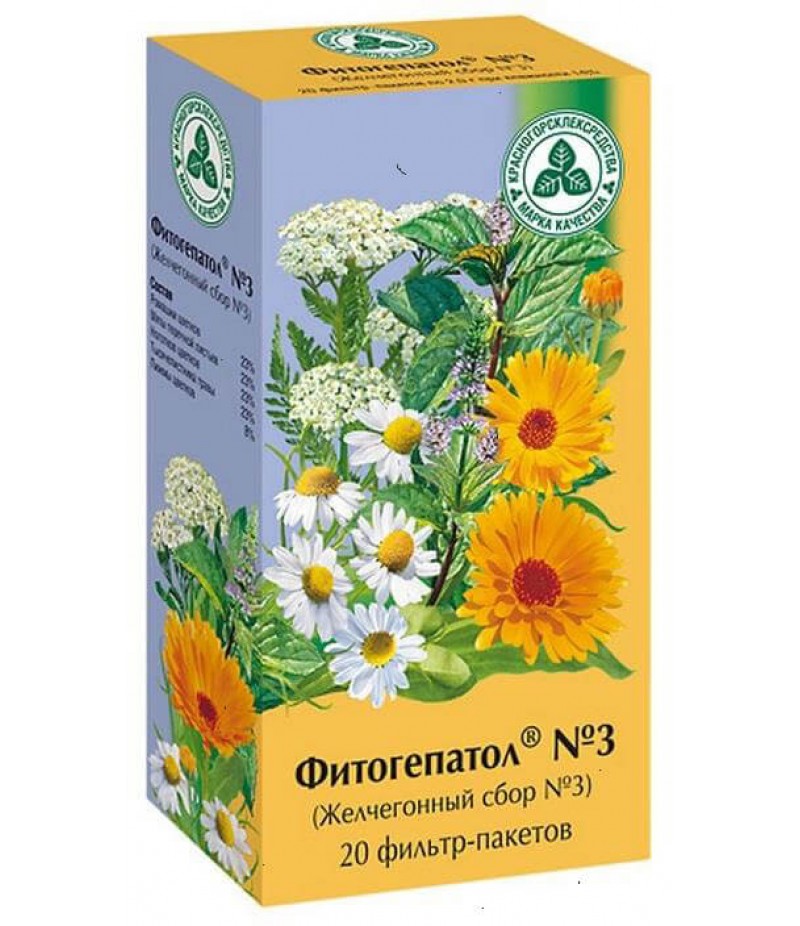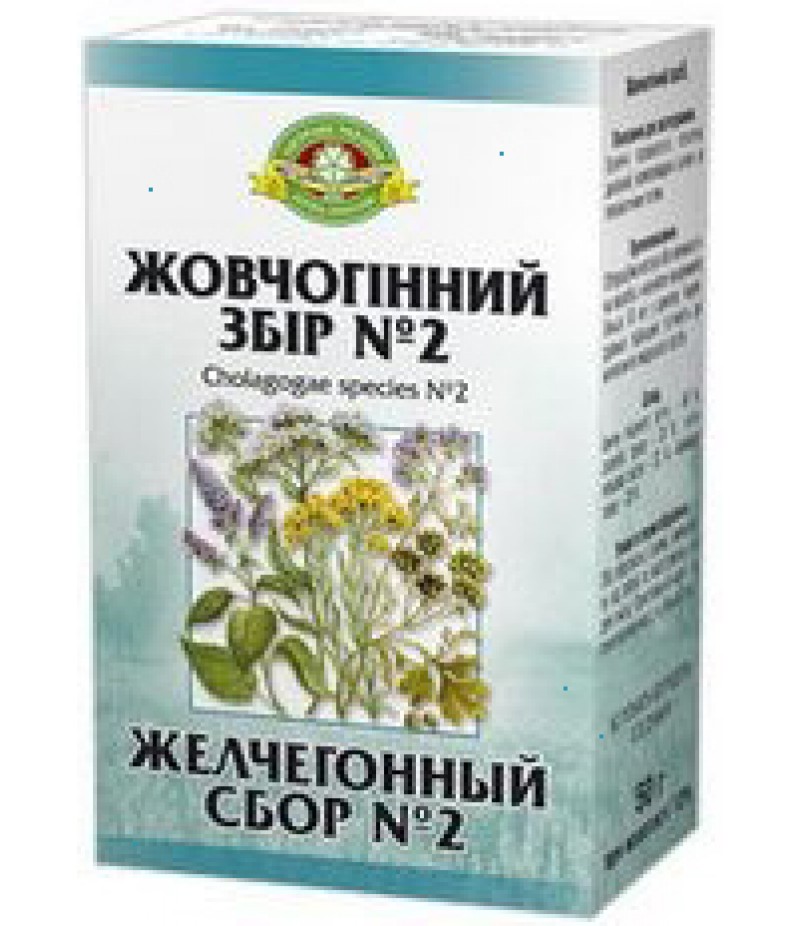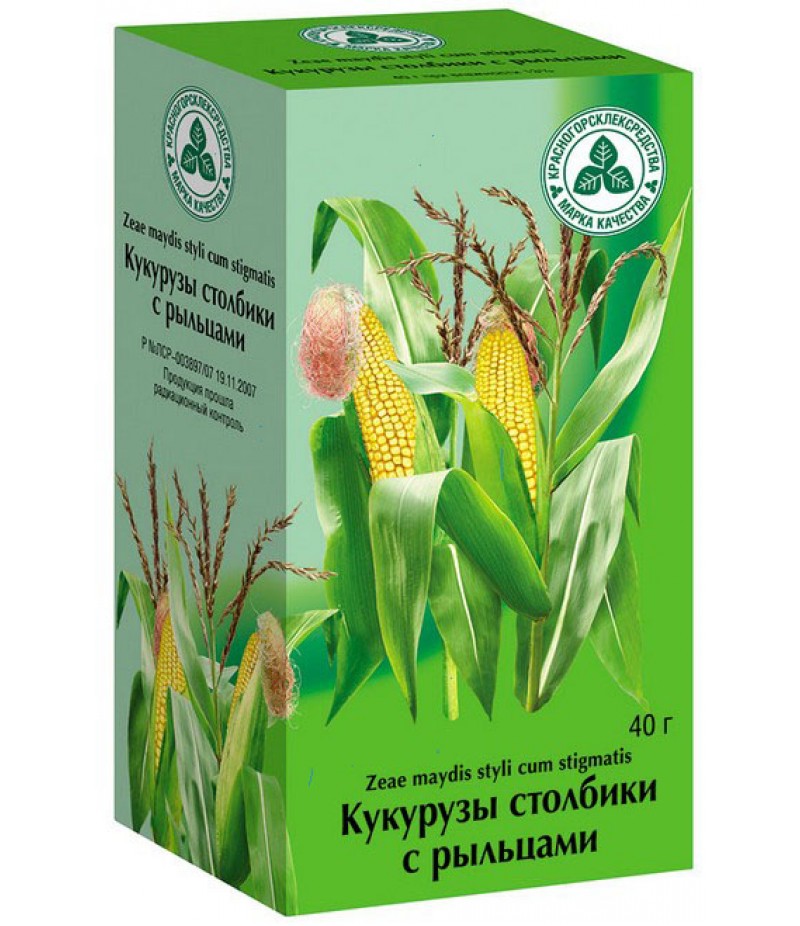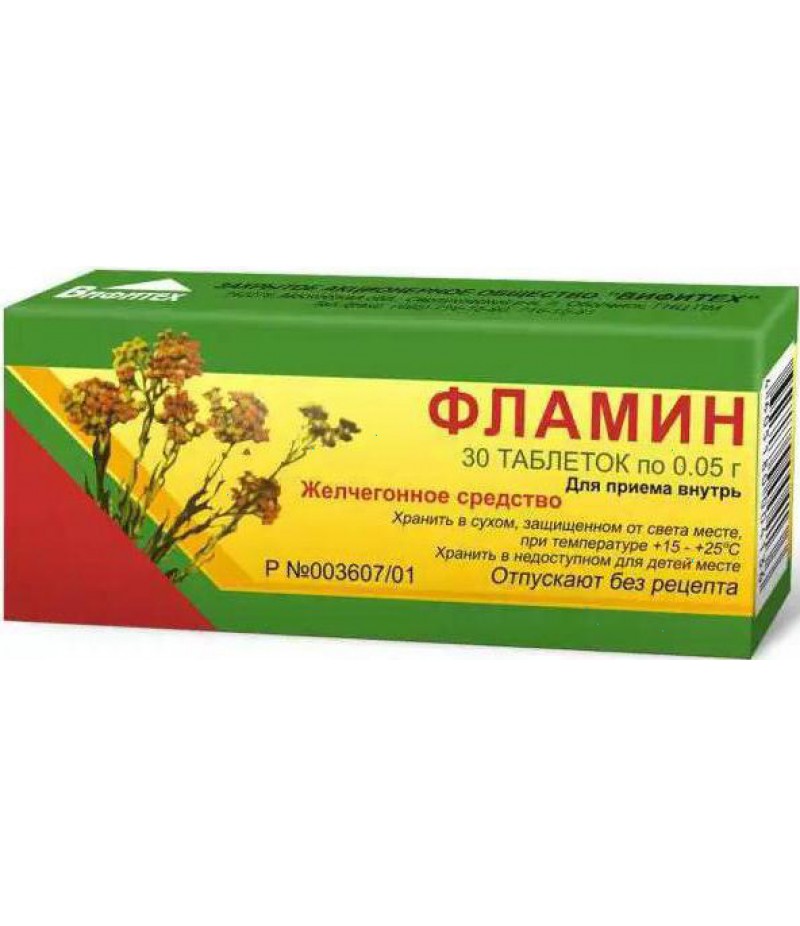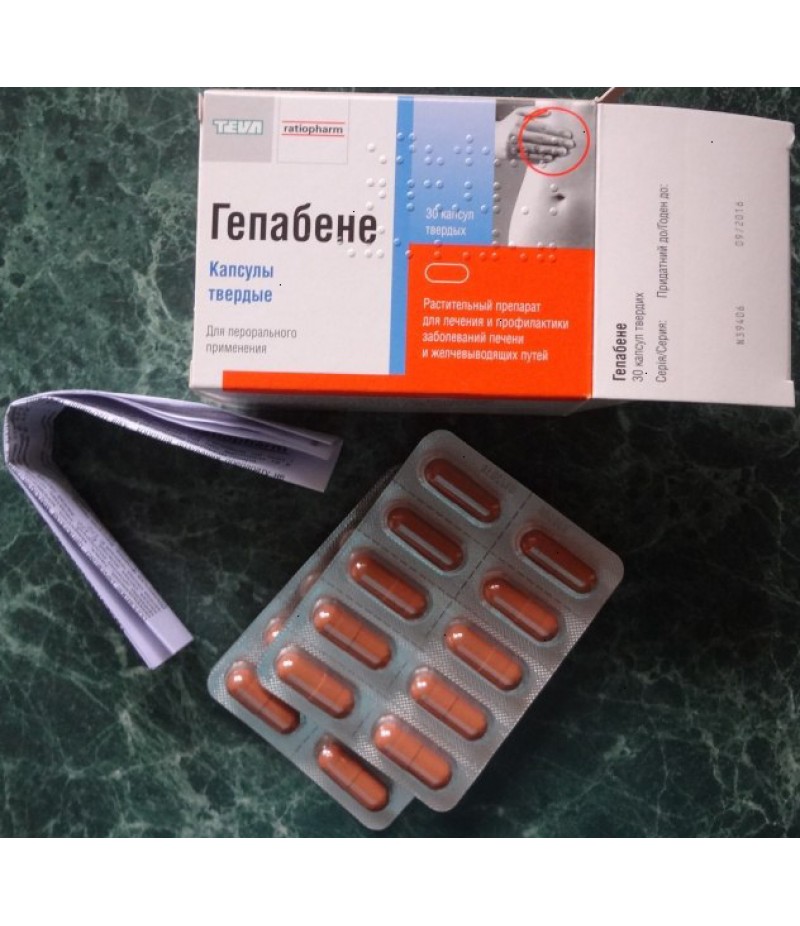Gelchegonniy sbor (choleretic blend) №3 2gr #20
- $5.61
- 3 or more $5.45
- Availability:In Stock
Gelchegonniy sbor №3 instructionYou can buy Gelchegonniy sbor №3 onlineComposition of choleretic collection №3In 1 pack of 8% of tansy flowers and 23% of chamomile flowers, marigold flowers, peppermint and yarrow herb.Form of issu..
Gelchegonniy sbor №3 instruction
You can buy Gelchegonniy sbor №3 online
Composition of choleretic collection №3
In 1 pack of 8% of tansy flowers and 23% of chamomile flowers, marigold flowers, peppermint and yarrow herb.
Form of issue
Shredded plant raw materials in cardboard packs of 35 g and 50 g.
Shredded raw materials in filter bags of 2 g in packs of 10 or 20 pieces.
pharmachologic effect
Cholagogue, antispasmodic, anti-inflammatory.
Pharmacodynamics and pharmacokinetics
Pharmacodynamics
Vegetative components of the collection have choleretic, antispasmodic and anti-inflammatory effect. A rich composition and versatile action makes it possible to apply the collection for various concomitant diseases of the gastrointestinal tract.
Menthol - the main component of peppermint oil, has a cholagogue effect and enhances the intestinal peristalsis.
The yarrow herb has a choleretic, anti-inflammatory, antispasmodic effect, and also enhances the secretion of gastric juice.
Flowers of marigolds have pronounced bactericidal properties, they are used as an antispasmodic agent, promote bile formation and bile secretion, increase secretion of gastric juice.
Chamomile flowers are known for their antiseptic and anti-inflammatory effect, they are used for flatulence, diarrhea, gastritis with low acidity, colitis and spasms of the intestines.
Flowers tansy have a cholagogue and spasmolytic effect, improve appetite and digestion. It is used for gastritis with low acidity, with diarrhea, inflammation of the intestine and flatulence.
Pharmacokinetics
The data are not presented.
Indications for use
The use of cholagogue collection is shown when:
chronic cholecystitis;
gastritis with low acidity;
biliary dyskinesia;
chronic cholangitis;
postcholecystectomy syndrome;
Dyspeptic disorders with a tendency to diarrhea.
Contraindications
hypersensitivity;
peptic ulcer in the stage of exacerbation;
acute pancreatitis;
gastritis in the stage of exacerbation;
stones in the gallbladder and ducts;
pregnancy;
lactation;
age up to 12 years.
Side effects
allergic reactions;
heartburn.
Cholagogue No. 3, instructions for use (Method and dosage)
Decoction is taken orally by 1 / 3- 3 cup three times a day for 40 minutes before meals. The course of treatment up to 4 weeks. To prepare the infusion take 2 tbsp. Spoons of raw materials for 200 ml of hot water. In enameled dishes heated on a water bath for 15-20 minutes, then insist 35-45 minutes. The raw material is squeezed, the infusion is brought to 200 ml with water. Before each use, the prepared infusion should be shaken. Has a bitter taste, slightly astringent.
Two filter bags are poured into 100 ml of boiling water and insist 15-20 minutes. For better extraction, you need to press the pouches several times with a spoon. After they are pressed, the volume of the infusion is adjusted to 100 ml with water. Take before meals for 0.5 cup three times a day.
Overdose
Cases of overdose are not known.
Interaction
Data not provided.
Terms of sale
Without prescription.
Storage conditions
Temperature up to 25 ° С.
Shelf life
2 years. Ready to cook the broth in the refrigerator for up to 2 days.
Reviews about cholagogue collection №3
Phytotherapy is widely used in the treatment of gastrointestinal diseases. This collection also has the name Phytohepatol, which indicates its purposeful action on the liver and bile excretory system.
Patients respond positively to vegetable tax collections, and some prefer phytotherapy to pharmaceuticals. However, it must be remembered that it is not always possible to manage only with herbs and often they go as an addition to the main medicamental treatment. It depends on the severity of the disease and the severity of the symptoms. How to choose a cholagogue collection, because there are three? It depends on the concomitant diseases of the gastrointestinal tract, as well as the acidity of the gastric juice and the type of dyskinesia of the bile ducts.
Medicinal plants are divided into choleretics (increase the secretion of bile) and cholekinetics (stimulate biliary excretion by strengthening the contraction of the gallbladder).
The first group includes: flowers of the immortelle, corn stigmas, tansy, peppermint, elephant root, yarrow, dandelion root, grass of a thousand-thousandth. This group of herbs is taken in the treatment of cholecystitis and accompanying constipation. Contraindicated in cholelithiasis, obstruction of the excretory ducts.
The second group includes: calendula, hawthorn flowers, fruit and barberry bark, chicken grass, chicory root, cornflower flowers, rose hips, dill and caraway seeds, lavender, lemon balm. Cholekinetics are shown in the hypotonic form of dyskinesia, when atony of the gallbladder and bile stasis are noted, as well as with reduced acidity of the gastric juice. Contraindicated with stones in the gallbladder, acute liver disease, with exacerbation of hyperacid gastritis.
Collection number 1 contains flowers of the immortelle, trefoil leaves (three-leafed watch), mint leaves, coriander fruits. In this collection the three-leaved watch, due to the presence of bitterness, stimulates the function of the entire digestive tract - the secretion of gastric juice, enzymes and bile. Has a laxative and antiseptic effect. The same stimulating effect on the digestive tract is provided by immortelle, which is effective in the treatment of concomitant colitis and constipation.
In composition number 2, in addition to immortelle, mint and coriander (as in the previous) included yarrow. This collection increases the secretion of bile, and the fruits of coriander and yarrow, will eliminate constipation.
In the cholagogue composition No. 3, additional tansy flowers are added, which increase the acidity of the gastric juice, calendula and chamomile, which have a pronounced anti-inflammatory effect. Therefore, it will be effective in inflammation not only of the gallbladder, but also of the intestines, as well as gastritis with reduced acidity and a tendency to diarrhea.
Phytotherapy courses are conducted for a long time (sometimes up to 2-3 months) and repeated 3-4 times a year. It is necessary to follow the principle of the expansion and addition of herbs in collections, taking into account the individual tolerability of herbs and the presence of concomitant diseases. If the fees are selected without taking into account the acidity of the gastric juice (and many did not determine and do not know), then if there is increased acidity, which will be stimulated even more, heartburn may occur. In most cases, in the absence of allergies, broths from herbs are well tolerated. Many patients note the effectiveness, natural composition and reasonable price.
"... Not an expensive, effective natural remedy. I always help with an exacerbation. "
"... Pains, heaviness in the right side and discomfort are significantly reduced after 2 days of intake."
"... In the spring chronic cholecystitis is constantly aggravated and I always take this compound. He fits me and does not cause heartburn. "
"... With not severe exacerbations of cholecystitis always bypass these herbs. Well help ».

